Archaeological Discoveries and Conservation Efforts at Pañamarca, Peru
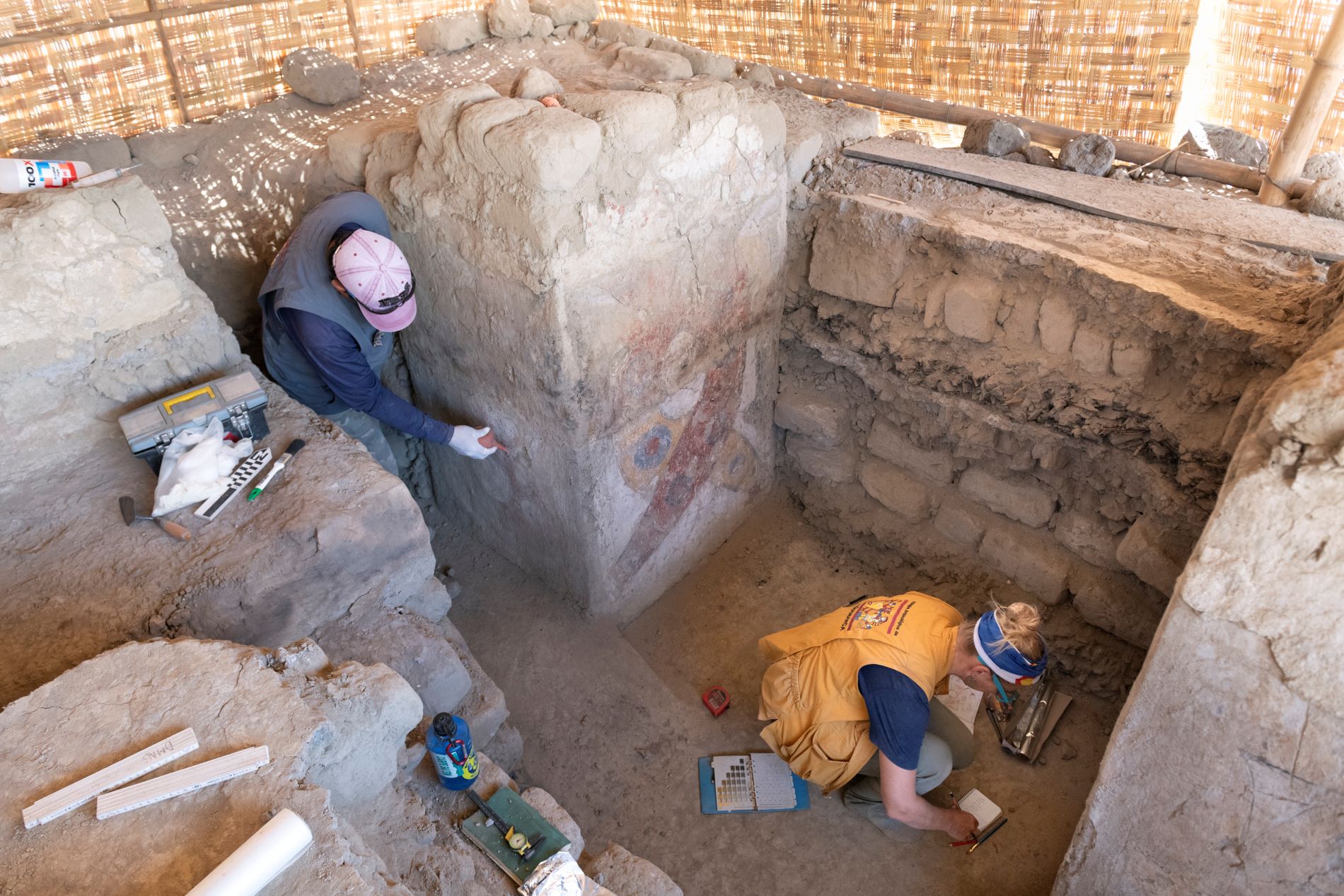
This past summer, on the coastal desert plain of the Nepeña Valley, Peru, archaeological and conservation work continued at the Moche center of Pañamarca. For the second field season in a row, the team — a collaboration between Denver Museum of Nature & Science, Columbia University and Peruvian archaeologists and conservators — revealed remarkable painted surfaces in an effort to better understand the architecture and activities performed on the site in the ancient past. Pañamarca is the southernmost monumental center of the Moche culture — a society that lived in the northern Peruvian coastal valleys starting around 350 CE until 850 CE. Moche archaeology is renowned for its lavish elite tombs, striking architecture and artworks, as well as intricate religious artifacts and imagery.
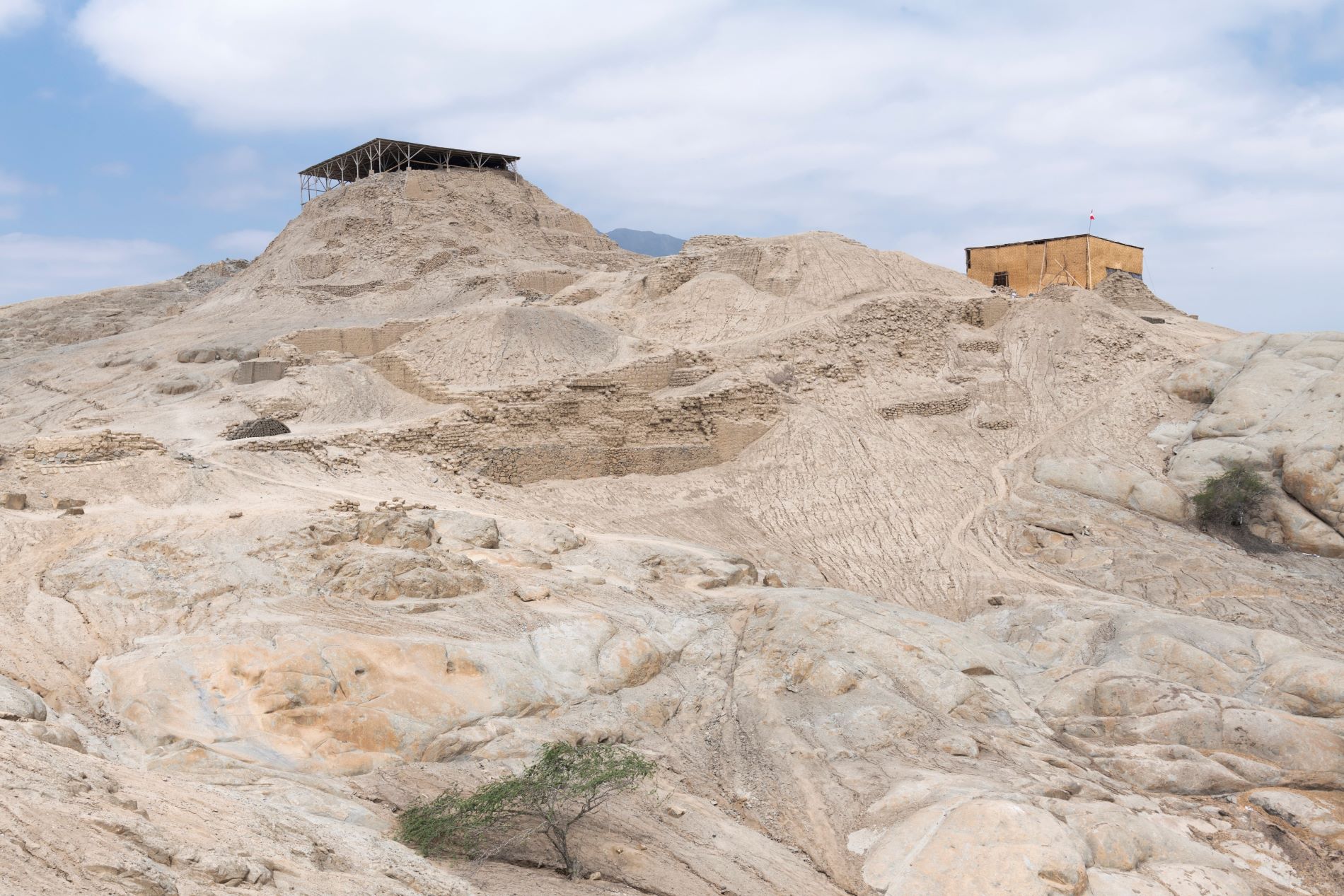
The site of Pañamarca with adobe architecture atop natural rock. The large adobe structure on the left with a roof is known as Platform I. The small house on the right is the temporary structure constructed over the Hall of Moche Imaginary for the 2023 season. (Photo/ R. Wicker)
Situated atop a granite outcrop, Pañamarca consists of an imposing stepped adobe platform, two lower — yet expansive — adobe platforms, a large adobe walled plaza and numerous smaller structures. Elaborate multi-colored Moche period murals depicting priests, warriors and supernatural beings decorate the plaza and platform walls. The first mural discoveries were documented in the 1950s. These included a famous mural of a Moche priestess, now lost to time because of insufficient past conservation efforts that left the mural exposed to the elements until it eroded away completely.
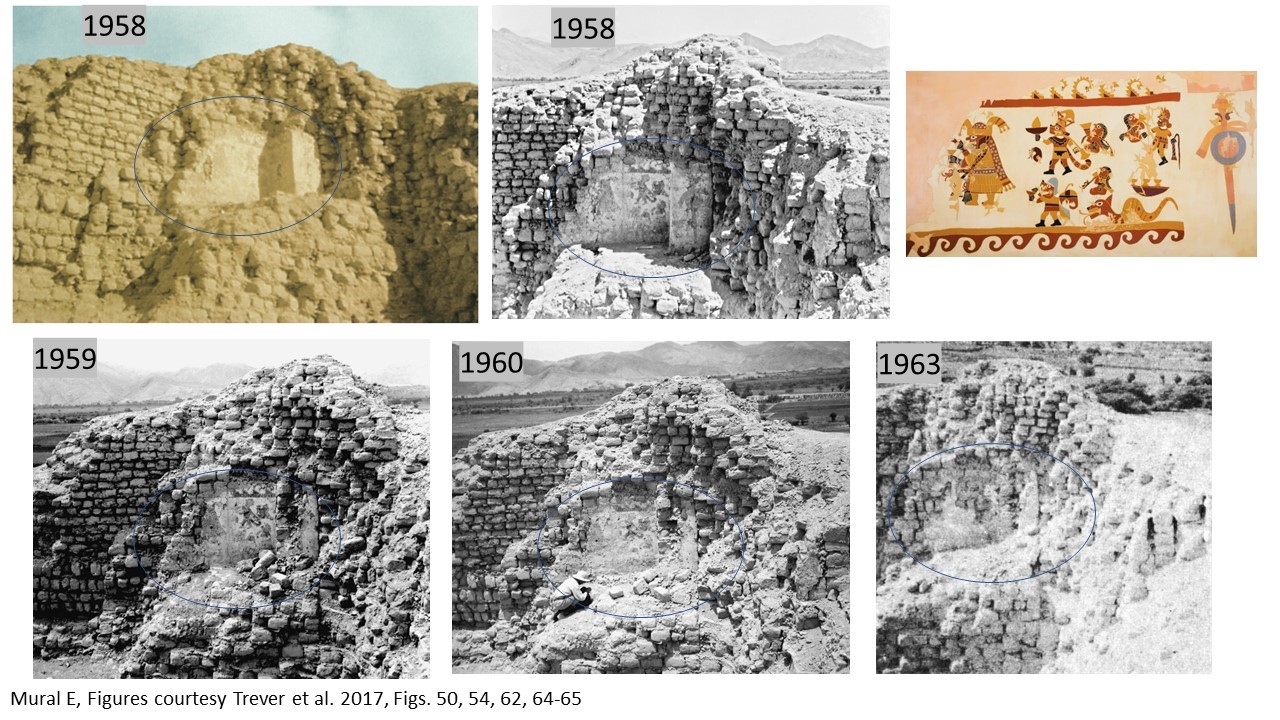
Series of images showing the deterioration of the priestess mural when left exposed. (Photo/ Trever et al.)
Very little work was done at the site until 2010, when Lisa Trever and her team documented paintings on numerous structures. Some of the most remarkable discoveries in 2010 were located within a monumental, pillared hall, now called “The Hall of Moche Imaginary” that was painted and repainted over the centuries. Our project continued excavations in this structure in 2022 and 2023, where exciting depictions of southern Moche life and imagination continue to be revealed.
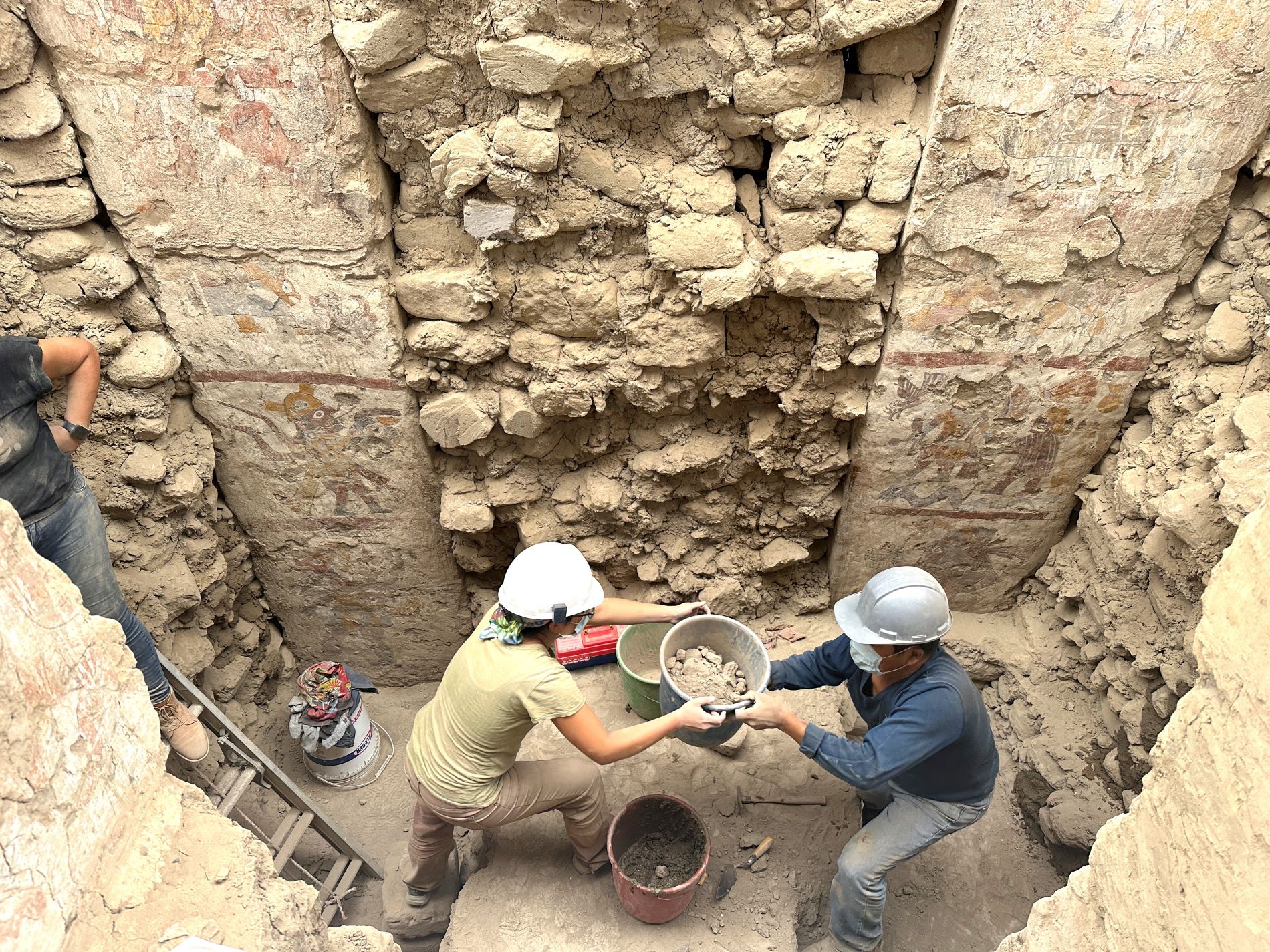
Gabriela De Los Ríos and César Alfredo Velásquez Seminario working in the 2023 excavation with the pillars in the back ground. (Photo/ L. Trever)
The “Hall of Moche Imaginary” has five known pillars surrounded by a painted corridor containing a scene of elaborately dressed personages in procession. The pillars, painted with bands of imagery on all faces, stand over three meters tall, yet it is unclear if they extend deeper below the earliest, lowest excavated floor. They were remodeled and repainted multiple times throughout their use. In 2023, four of these pillar faces were uncovered for the first time.
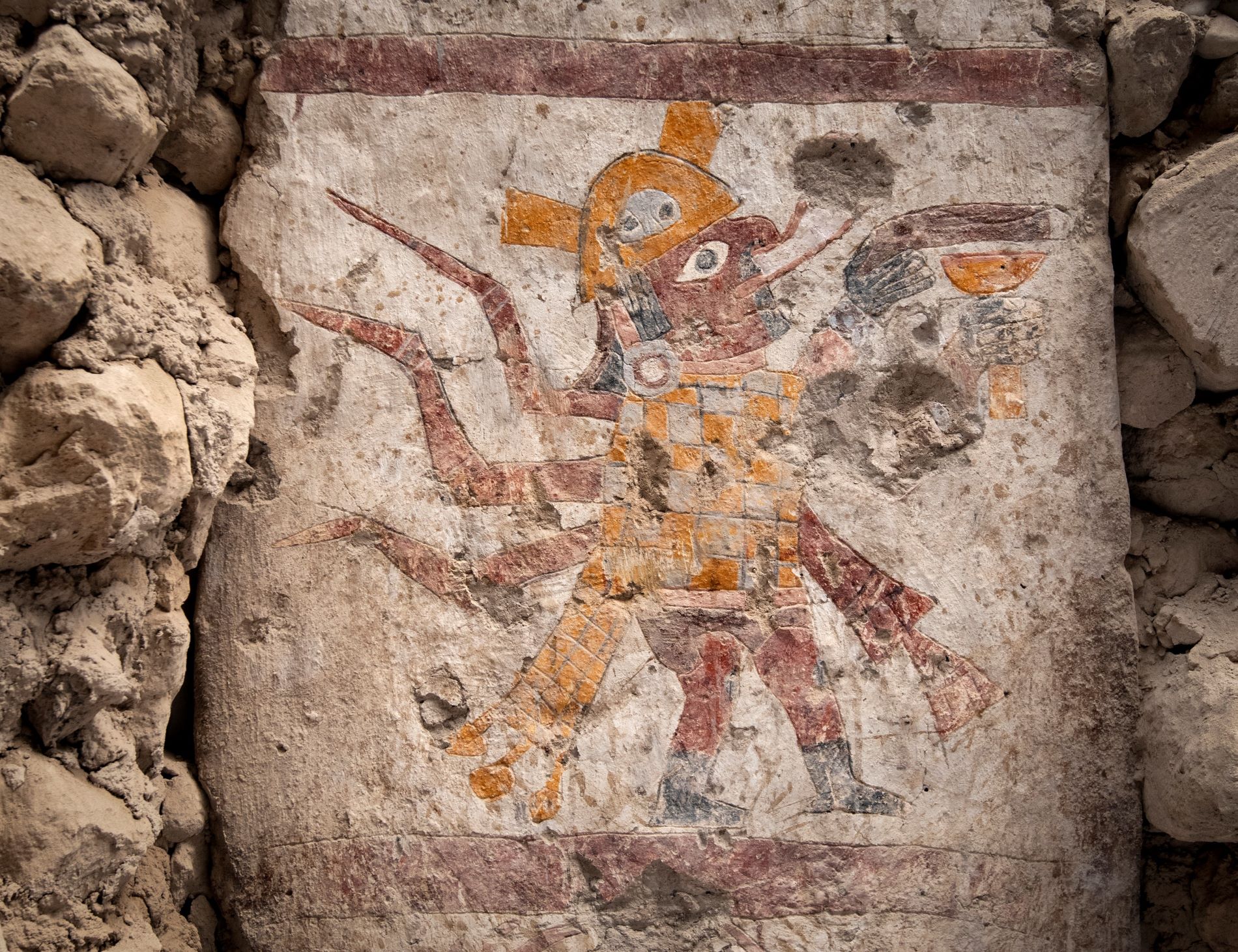
The spider-man holding goblet on Pillar 1. (Photo/ R. Wicker)
Here we see imagery of a spider-man, a deer-man carrying a jar, seated individuals with cupped hands and many images of finely dressed women. The imagery demonstrates the importance of the relationship and connection between the fauna and the Moche social world. These pillars, grouped in pairs, are joined by architectural elements such as finely decorated benches and potential thrones — all of which we intend to further explore in future years of the project.
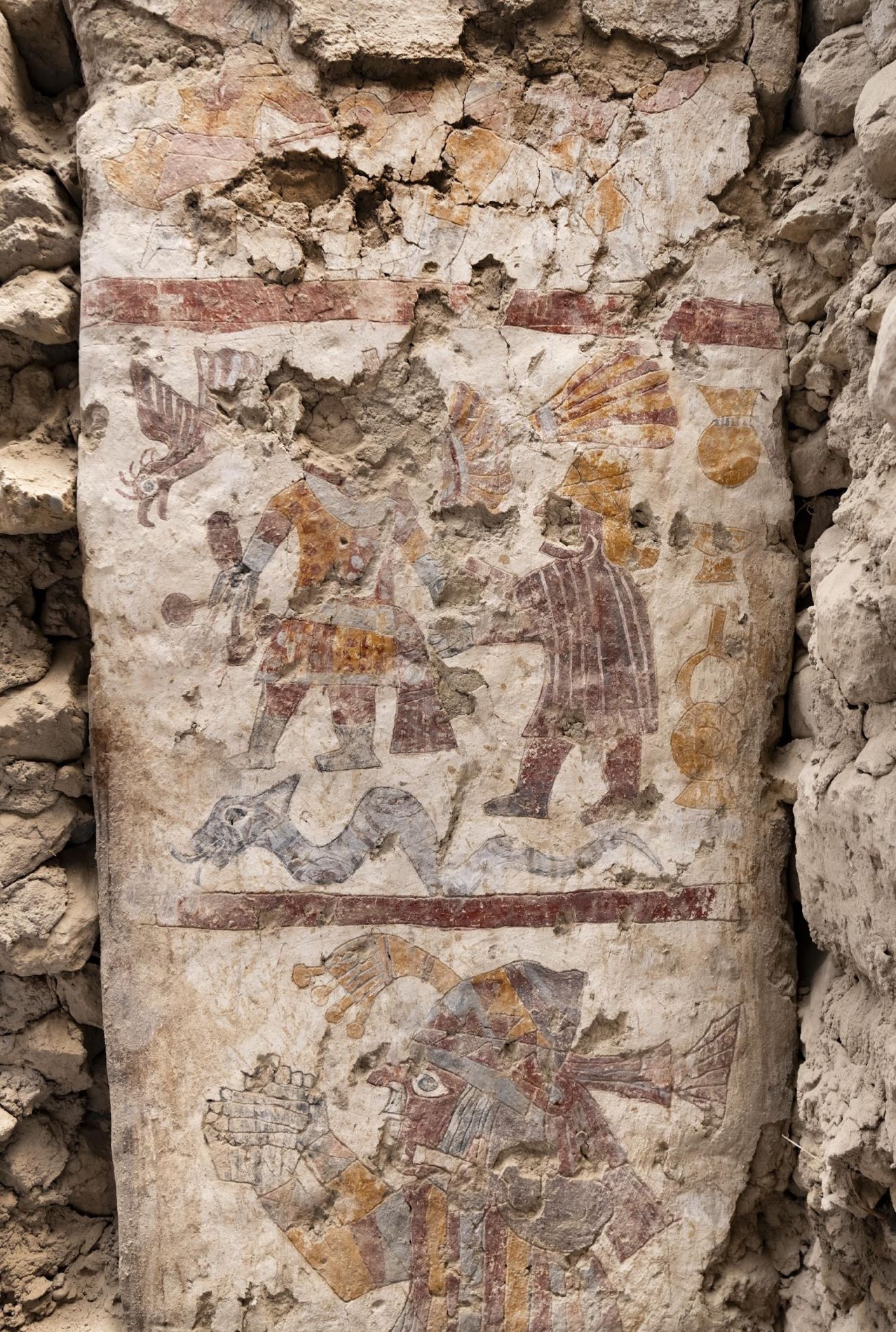
Pillar 2 the central register has a man with attendant, raptor, eared snake and vessels (jar, pedestal dish, stirrup-spout bottle). The lower register has an individual with cupped hands. (Photo/ R. Wicker)
In addition to the exciting new findings in the “Hall of Moche Imaginary,” new excavations in 2023 on the Moche era plaza revealed a previously undocumented structure now referred to as the “Hall of the Braided Serpents.” The structure contains at least two well-preserved pillars, but certainly more will be revealed with future investigations. Each of the pillar faces depicts images of intertwined serpents with squatting human legs — a motif never before documented in Moche art.
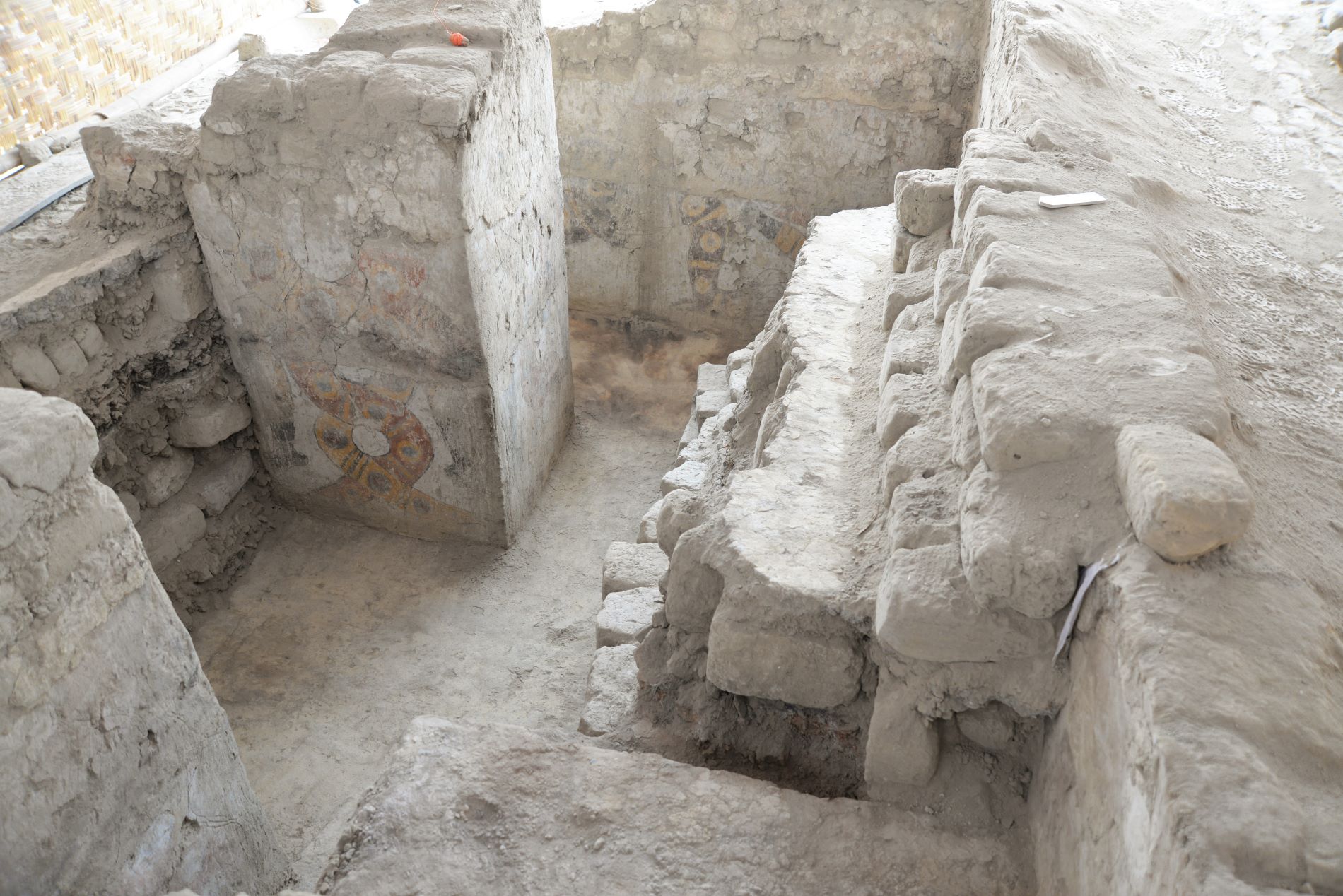
Pillars with intertwined anthropomorphized snakes. The wall in the background contains the Moche monster chasing a man. (Photo/ M. Koons)
These pillars were surrounded on at least three of their sides by decorated walls, one of them with the image of a life-size Moche monster chasing a man. The room underwent multiple renewal events that included various offerings — most notably textiles — burning events, the careful capping of floors and the white-washing of previously painted walls. The prominent position of this structure, perched above the plaza but also private in its enclosed spaces, leads us to suggest it played an important role for privileged individuals overseeing the activities performed below.

Artistic representation of the wall with the Moche monster chasing a man. (Drawing/ M. Koons)
The archaeological intervention at Pañamarca goes hand in hand with conservation efforts. To ensure that what is excavated gets preserved, conservators work alongside archaeologists to stabilize walls and murals. The painted walls can be extremely fragile and sometimes prone to loss and collapsing if immediate action is not taken. Additionally, during excavation, temporary shelters are erected to ensure the protection of the exposed walls from wind and direct sunlight.

Conservators Blanca Sanchez, left, and Gianella Pacheco Neyra, right, working on the consolidation and stabilization of the painted walls during excavation. (Photo/ L. Trever)
Documentation of the murals is a top priority. In addition to notes and photos, a variety of multimedia techniques are used to document the spaces, including photogrammetry and LiDAR. This past year, documentation included bringing the Museum’s new 3D scanner on site, which helped to capture high-quality scans of the painted surfaces and their spatial relation to each other. We also employed the Avenir Conservation Center’s portable X-ray fluorescence spectrometer. This handheld device analyzes what elements are present in the pigments on the murals.

Evan Tamez-Galvan from Denver Museum of Nature & Science using 3D scanning. (Photo/ R. Wicker)
Beginning this year, a selection of excavated artifacts underwent further cleaning and conservation treatment to reduce the risk of further loss and deterioration. These objects included a partial ceramic vessel that depicts a frog, several copper alloy metal ornaments, and a section of woven plant material roofing, or room divider.
Once the field season is complete, all architectural features, including murals, are reburied for protection. If left exposed and without maintenance, the mural art would be destroyed by the elements, as was observed with the priestess mural from the 1950s. This is particularly pressing as coastal Peru awaits an anticipated strong El Niño event, which is forecasted to bring devastating rains to this otherwise desert environment between January and March of 2024.

Denver Museum of Nature & Science conservator Megan Salas works on a fragment of roofing or door/ screen made out of cane and other woven plant materials. (Photo/ R. Wicker)
The team looks forward to returning to the field this summer to continue excavation and conservation efforts. Each opportunity to excavate at the site provides the chance to learn immense amounts about Moche culture on this southernmost frontier.
This project is generously funded by the Denver Museum of Nature and Science Avenir Conservation Center and Columbia University.
This browser is no longer supported.
We have detected you are using a less secure browser - Internet Explorer.
Please download or use Google Chrome, Firefox or if using Windows 10, you may also use Microsoft's Edge browser.